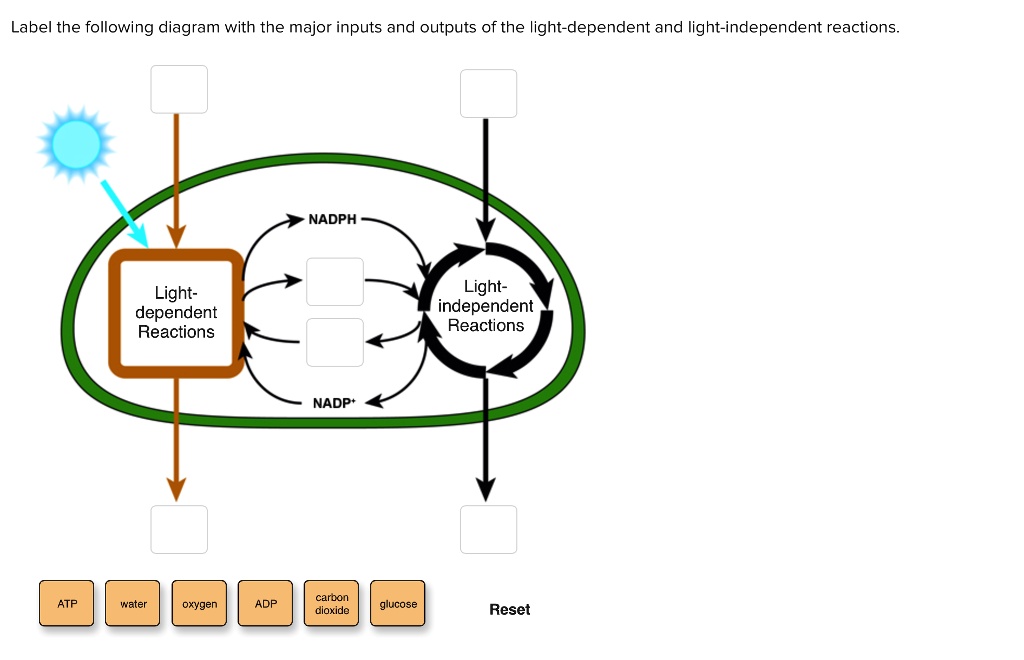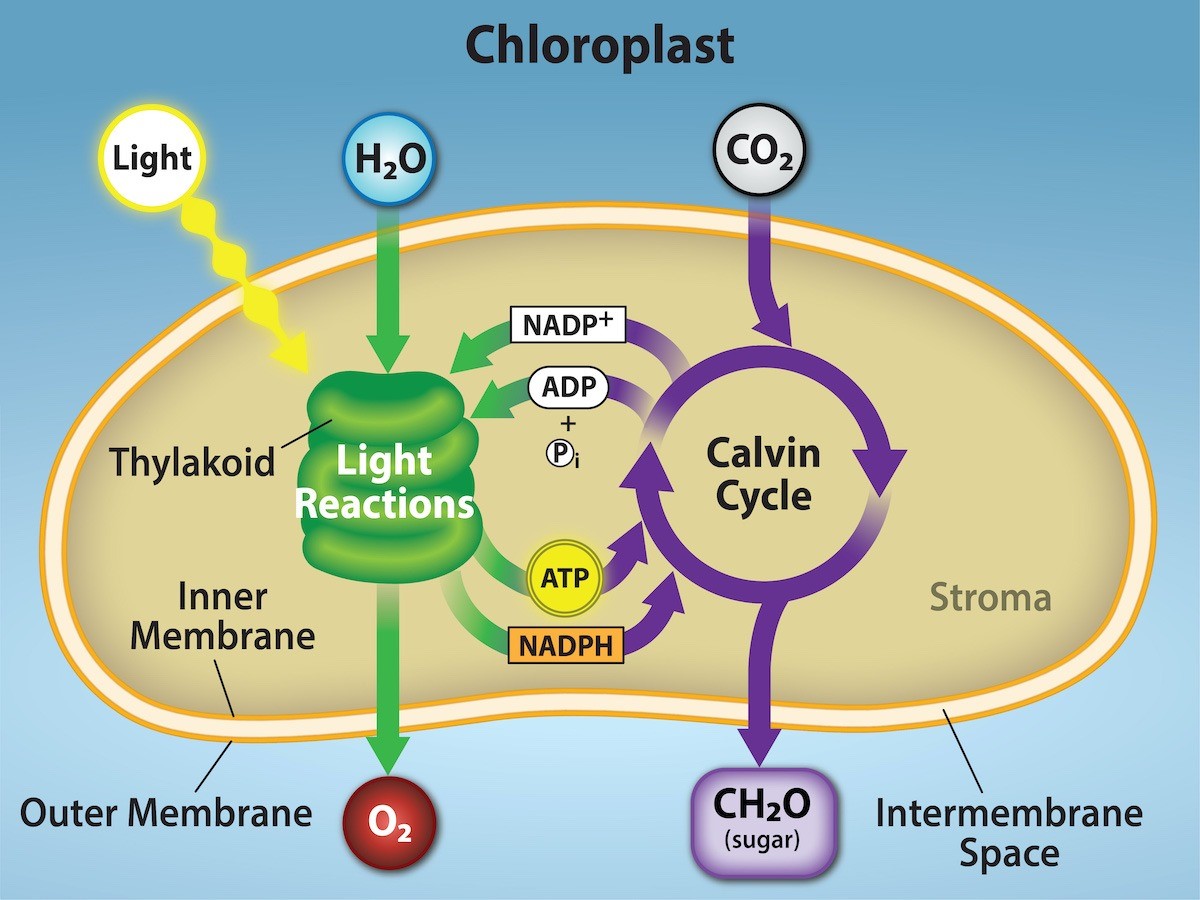Light-dependent reactions occur in the thylakoid membrane, a critical component of the chloroplast where photosynthesis takes place. These reactions are the first step in converting light energy into chemical energy in plants. Understanding this process is essential for anyone interested in plant biology, agriculture, or environmental science.
The light-dependent reactions are a fascinating aspect of photosynthesis, responsible for producing energy carriers like ATP and NADPH. These energy carriers are essential for driving the second stage of photosynthesis, known as the Calvin cycle. In this article, we will delve into the details of how these reactions occur and their significance in the biological world.
Whether you're a student, researcher, or simply someone curious about the science behind plant life, this article will provide you with an in-depth exploration of light-dependent reactions. By the end, you'll have a clearer understanding of the mechanisms and importance of these processes.
Read also:Nirvana Come As You Are Meaning A Deep Dive Into Its Lyrics And Symbolism
Table of Contents
- Introduction to Photosynthesis
- Thylakoid Membrane Overview
- Components of Light-Dependent Reactions
- How Light-Dependent Reactions Occur
- Importance of ATP and NADPH
- Factors Affecting Light-Dependent Reactions
- Comparison with Light-Independent Reactions
- Role in Ecosystems
- Current Research and Applications
- Conclusion and Future Perspectives
Introduction to Photosynthesis
Photosynthesis is one of the most fundamental biological processes on Earth. It is the mechanism by which plants, algae, and some bacteria convert sunlight into chemical energy. The process can be divided into two main stages: the light-dependent reactions and the light-independent reactions (Calvin cycle). Light-dependent reactions occur in the thylakoid membrane of the chloroplast, where the energy of sunlight is harnessed to produce ATP and NADPH.
During these reactions, light energy is absorbed by pigments such as chlorophyll, which excites electrons and initiates a series of electron transport processes. These processes ultimately lead to the generation of ATP and NADPH, which are essential for synthesizing glucose in the Calvin cycle.
Thylakoid Membrane Overview
Structure and Function
The thylakoid membrane is a specialized structure within the chloroplast that houses the proteins and pigments necessary for light-dependent reactions. It consists of a network of flattened, interconnected sacs called thylakoids. The membrane contains important components such as Photosystem I, Photosystem II, cytochrome b6f complex, and ATP synthase.
Each of these components plays a specific role in the process of converting light energy into chemical energy. For example, Photosystem II captures light energy to split water molecules, releasing oxygen as a byproduct. Meanwhile, Photosystem I uses light energy to reduce NADP+ to NADPH.
Components of Light-Dependent Reactions
Pigments and Proteins
Several key components are involved in light-dependent reactions:
- Chlorophyll: The primary pigment responsible for absorbing light energy.
- Photosystem II: Initiates the light-dependent reactions by capturing light energy and splitting water molecules.
- Photosystem I: Uses light energy to produce NADPH.
- Cytochrome b6f Complex: Facilitates the transfer of electrons and the pumping of protons across the thylakoid membrane.
- ATP Synthase: Generates ATP by utilizing the proton gradient across the membrane.
These components work together in a highly coordinated manner to ensure the efficient conversion of light energy into chemical energy.
Read also:Alana Wyatt A Rising Star Shaping The Future Of Entertainment
How Light-Dependent Reactions Occur
Step-by-Step Process
The light-dependent reactions can be broken down into several key steps:
- Light Absorption: Chlorophyll and other pigments absorb light energy, exciting electrons to higher energy states.
- Water Splitting: Photosystem II uses the absorbed energy to split water molecules into oxygen, protons, and electrons.
- Electron Transport: Electrons are transferred through the electron transport chain, involving Photosystem II, the cytochrome b6f complex, and Photosystem I.
- ATP and NADPH Production: The movement of protons across the thylakoid membrane drives ATP synthase to produce ATP, while Photosystem I reduces NADP+ to NADPH.
This intricate process ensures that the energy captured from sunlight is effectively converted into forms that can be used by the plant.
Importance of ATP and NADPH
Energy Carriers in Photosynthesis
ATP and NADPH are the primary energy carriers produced during light-dependent reactions. ATP provides the energy required for various biochemical processes, including the Calvin cycle. NADPH, on the other hand, acts as a reducing agent, donating electrons to drive chemical reactions.
Together, ATP and NADPH enable the synthesis of glucose and other organic compounds, which serve as food sources for plants and other organisms. Their production is therefore critical for sustaining life on Earth.
Factors Affecting Light-Dependent Reactions
Environmental and Biological Factors
Several factors can influence the efficiency of light-dependent reactions:
- Light Intensity: Higher light intensity generally increases the rate of reactions, up to a certain point.
- Temperature: Optimal temperatures enhance enzyme activity and reaction rates.
- Water Availability: Adequate water supply is crucial for maintaining the splitting of water molecules.
- Chlorophyll Concentration: Higher chlorophyll levels can improve light absorption.
Understanding these factors is important for optimizing plant growth and productivity in agricultural settings.
Comparison with Light-Independent Reactions
Key Differences
While light-dependent reactions occur in the thylakoid membrane, light-independent reactions (Calvin cycle) take place in the stroma of the chloroplast. The main differences between the two stages are:
- Light-dependent reactions require light, whereas light-independent reactions do not.
- Light-dependent reactions produce ATP and NADPH, while light-independent reactions use these molecules to synthesize glucose.
- Light-dependent reactions occur in the thylakoid membrane, while light-independent reactions occur in the stroma.
Both stages are interconnected and essential for the overall process of photosynthesis.
Role in Ecosystems
Contribution to Life on Earth
Light-dependent reactions play a vital role in ecosystems by producing oxygen and supporting the food chain. The oxygen released during water splitting is essential for the survival of aerobic organisms, including humans. Additionally, the glucose synthesized through photosynthesis serves as a primary energy source for plants and herbivores, which are then consumed by higher trophic levels.
This process not only sustains life but also helps regulate the Earth's climate by removing carbon dioxide from the atmosphere.
Current Research and Applications
Innovations in Photosynthesis
Research into light-dependent reactions is ongoing, with scientists exploring ways to improve photosynthetic efficiency. Some promising areas of study include:
- Engineering plants with enhanced chlorophyll content.
- Developing crops that can better tolerate environmental stresses.
- Utilizing synthetic biology to create artificial photosynthetic systems.
These advancements could have significant implications for global food security and environmental sustainability.
Conclusion and Future Perspectives
In conclusion, light-dependent reactions occur in the thylakoid membrane and are a critical component of photosynthesis. They involve the absorption of light energy, the splitting of water molecules, and the production of ATP and NADPH. These processes are essential for the survival of plants and the organisms that depend on them.
As we continue to face challenges such as climate change and population growth, understanding and enhancing photosynthetic processes will be crucial. By supporting research in this field, we can work towards a more sustainable and resilient future.
Feel free to share your thoughts in the comments section below or explore other articles on our site for more insights into the fascinating world of biology and science.

![IMAT 2016 Q38 [LightDependent Reactions in Photosynthesis] Past](https://imat.entermedschool.com/uploads/default/original/1X/56445a77a47b06ed2141b417a0c59dae5dc7b9e7.jpeg)
